Tools & Equipment
Click on the links to get details and examples.
- Awl
- Calculator
- Eraser
- Felt Tipped Pens
- Flexible Ruler
- French Curve
- Iron & Ironing Aids
- Measuring Tape
- Pattern Hooks
- Patternmaking Paper
- Pattern Notcher
- Pattern Punch
- Pattern Weights
- Pencils (Hard, 3H or 4H)
- Pins & Pinholder
- Third Scale Ruler
- Scissors: Fabric & Paper
- Scotch Tape
- Square Ruler
- Tailor's Chalk
- Toile Fabric
- Tracing Wheel
Awl
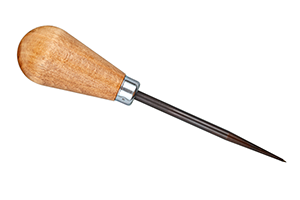
The awl is used to mark points on the inside of the block or pattern, by piercing a hole through the cardboard or paper. The resulting hole is referred to as a "drill hole". These drill holes indicate the placement of the dart point, pocket placements, buttons and buttonholes, and other interior features that need to be marked onto the fabric from the pattern. The example below illustrates where the awl is used to mark the Bodice Front block. The Bust Point and Dart Point are inside the pattern and the Awl is punched through all three points. The patternmaker can then put a pencil tip through those holes and mark these points on the paper or cardboard underneath.
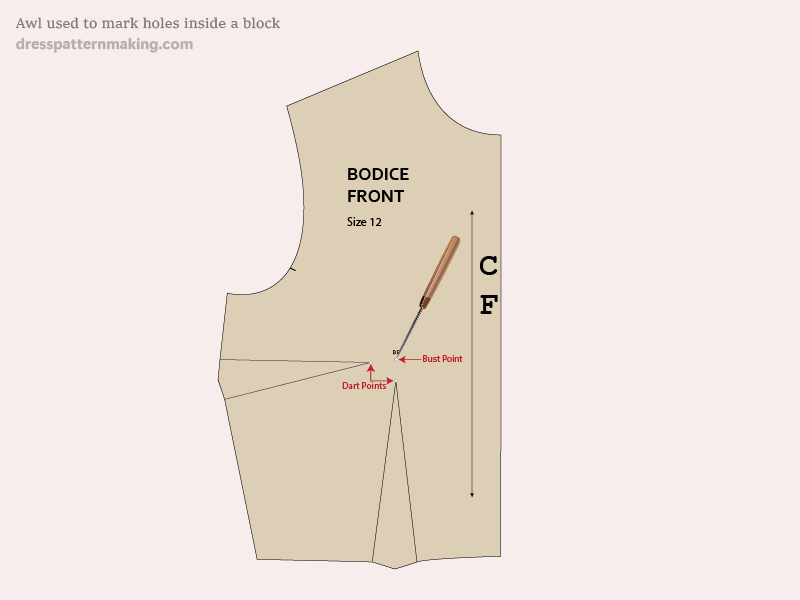
Related tool: For the tool that is used to mark the the edges of the block - see the Pattern Notcher.
Felt Tipped Pens
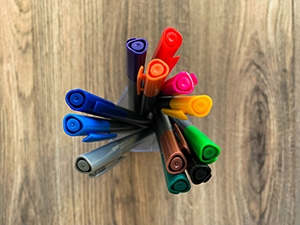
Felt tipped pens can be used on your blocks for color coding to identify pattern lines, changes on the patterns or corrections. You can create new blocks for some of these (e.g. an Empire Line Block, or a Sleeveless Contour Block) if you wish, or just reuse this block, transferring the markings onto the pattern in the creation process.
Example
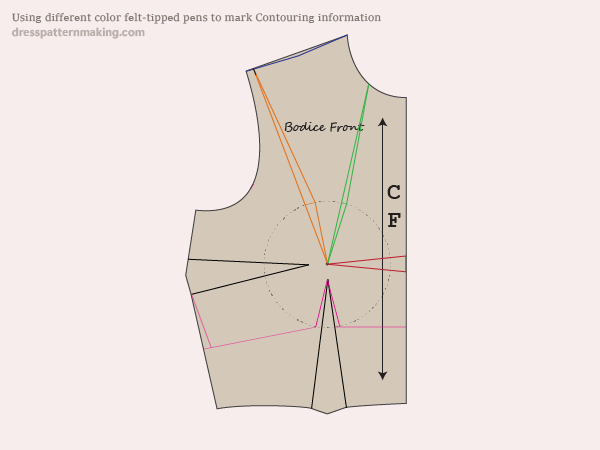
Block Markings
In the image, felt-tipped pens have been used to note Contouring information.
Flexible Ruler
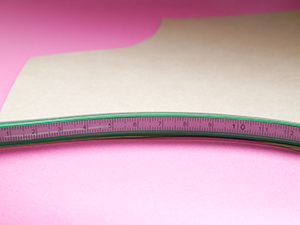
A flexible ruler makes it easy to measure curves like armholes and necklines. For example, when making the Sleeve Block as you need to measure the armhole curves and use this measurement to construct the sleeve. Measuring the armhole curves with a straight ruler or even a tape measure can give less accurate measurements.
French Curve
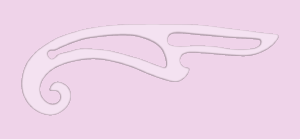
A French curve is used to draw curves at the armhole, neckline, curved darts, sleeve cap curves, and hip-line curve, etc. They are transparent and some come with a straight edge including a Seam Allowance Guide and Grading Rules. French curves come in a variety of sizes and shapes.
Example
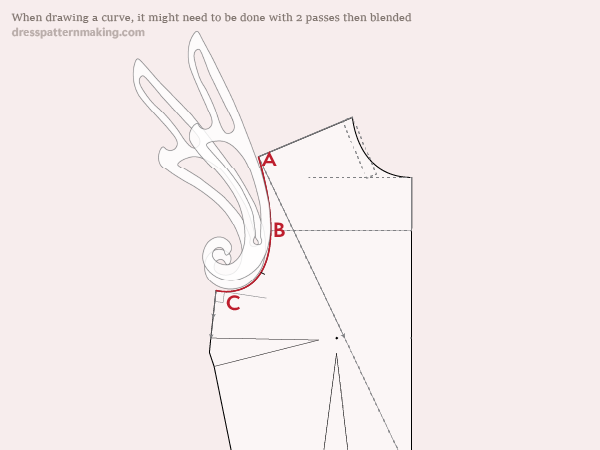
A French Curve is used to make the curve at the armhole of the Bodice Block: The French Curve is used to join points A, B & C. Note that you may have to move the Curve and blend the lines, it cannot always be done in one pass.
Ironing Aids
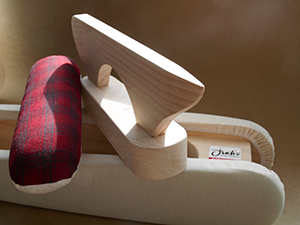
If you are going to go beyond making the pattern to making toiles and garments, an iron and ironing board are essential, but there is also other ironing equipment that can make your life easier. A tailor's ham is useful for ironing curved surfaces, a point presser helps press open hard to reach seams, a clapper flattens bulky facings and edges, etc., and a sleeve board is, of course, useful for ironing sleeves.
Measuring Tape

A good tape measure will not stretch and has measurements on both sides - often centimeters (cms) on one wide and inches on the other. Better quality tape measures are softer and more flexible; one brand of top-quality tape measures is Hoechstmass. Note soft and flexible tape-measures made from cloth-like fabric is not good; this kind of tape measure will stretch over time. Cheaper tape measures are very stiff plastic; they more difficult to work with as they don't 'drape' well. (I find these stiff ones will not stay draped around my neck, they invariably fall off). Given that even the most expensive are still fairly cheap, it is better to get a good quality one.
Model Stand
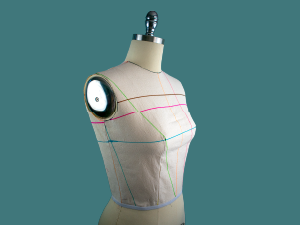
A Model Stand makes fitting garments much easier, especially if you are patternmaking and making garments for yourself. However, a Model Stand won't solve all your fitting issues if you have a non-standard figure, unless you get one custom made. If you buy a standard or expandable body form, even if they are the same measurements as your figure (or your model's figure), this doesn't necessarily mean that it will have the same shape. At a minimum, for a model with large busts, some wadding/wrapping will need to be done around the breasts. See the article on Body Forms for more information and details of where to order personalized Body Forms. Back to the top of the page.
Pattern Hooks
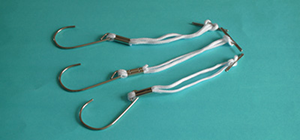
Pattern Hooks are used for storing (cardboard) patterns or blocks hanging up. One pattern hook can be used for a whole set of blocks or pattern.
Examples
The metal end of the pattern hook is pushed through a hole made in the cardboard with a Pattern Punch. A pattern library. A number of pieces of cardboard - a set of blocks, a pattern, etc - can be hung up on one hook.
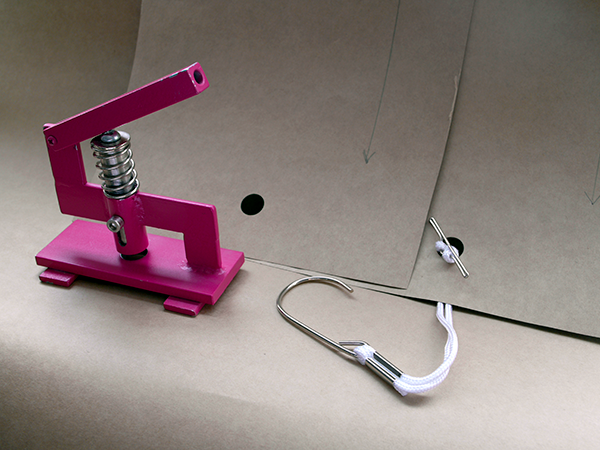
Patternmaking Paper
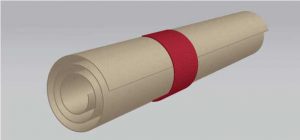
Patternmaking Paper can refer to both the heavy-duty cardboard* (around 225gsm) used to make blocks, and thinner paper used to make the patterns which are pinned onto the fabric. Patternmaking suppliers sell a variety of papers including special Dot/Cross Marking Paper which is a high quality option; it is partially see-through, and the marks on it help you to keep your lines and angles correct. It is also quite expensive. * (We call this heavy paper cardboard in Australia, but it is called Oak Tag, Tag Board or other names in the US).
Example
Blocks | Slopers
For Blocks and Slopers, you need the heavier cardboard (in American known as paperboard or cardstock?) . Buying the heavier paper in large enough sheets to make your Pants and Extended Line Dresses Blocks can be a challenge for the home sewer. If you live in a city near a TAFE that offers Patternmaking subjects, you are in luck. It is also very easy to buy online from places such as EM Greenfields, but the postage will mean that it won't end up cheap. The Patternmaking cardboard comes in sheets of 120 x 74 cm, so if you buy 10 or more sheets it may be worth the postage. You can buy the Dot/Cross paper from these suppliers also.
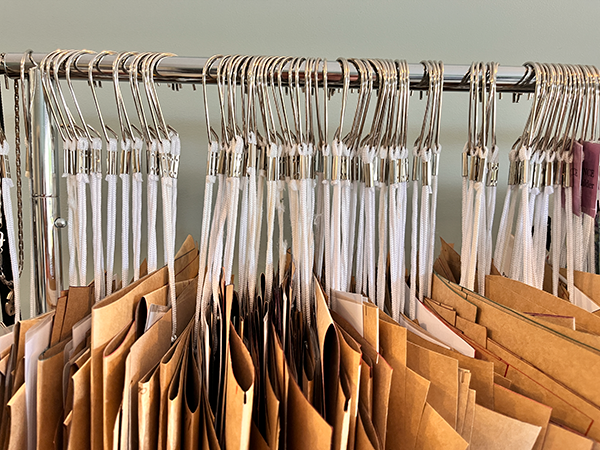
Paper for the (Cutting) Pattern
For the pattern that will be pinned onto the fabric, you can use a variety of different papers. One option is a dot/cross patternmaking paper that is often used by dressmakers (ast least in Australia). It is sold in rolls of 100m+ by wholesalers such as M Recht. You can also buy pattern tracing paper from your local sewing shop, but this is also very expensive. I find brown kraft paper works perfectly alright for heavier fabrics, including most cottons. For finer fabric, the kraft paper is too thick and you need to look at other options such as tissue paper (if you can get the right thickness and in big enough sheets) and another alternative is using non-woven non-fusible interfacing (vilene). I buy Patternmaking Cardboard online from EM Greenfields in Sydney and have it shipped (it's actually called Pattern Paper). I generally use vilene for most of my patterns.
Pattern Notcher
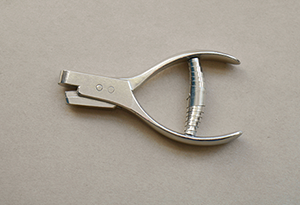
The Pattern Notcher is used to clip the edges of the block where something needs to occur in the construction of the garment; e.g. at the end of the dart legs, so the sewer knows how much of the fabric to fold together to construct the dart; balance points, so the sewer can match two garment pieces together, etc. The marks made by the notcher are transferred from the block to the pattern and fabric to ensure the garment is constructed correctly.
Example
Notching within the patter
In this image, the armhole and the dart legs are notched on the Front Bodice. The armhole has one notch to show that this is the front armhole (the back armhole will have two notches) and it is also a balance point to assist attaching the bodice to the sleeve; the notches on the dart legs are to show how much fabric is to be pinched together to form the armhole and waist darts.
The notcher allows these marks to be made within the pattern, which is different to most commerical patterns which place a triangle on the outside of the pattern outline.
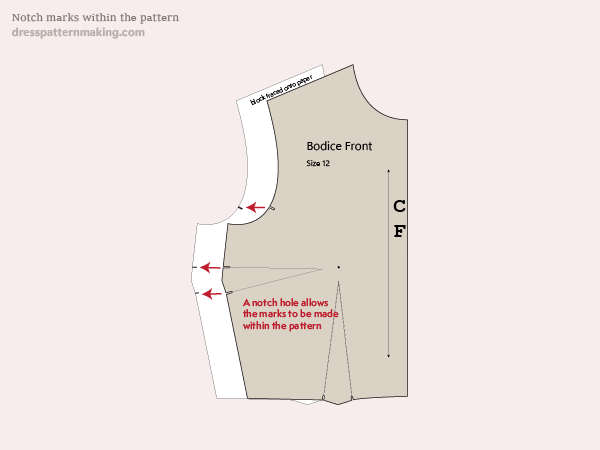
Note: Related Tool
For the tool used to mark points on the inside of the block or pattern, see the Awl.
Pattern Punch
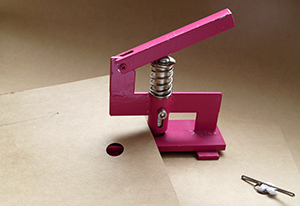
The Pattern Punch is used to punch holes in your cardboard blocks/patterns so that you can store them hanging up.
Example
The Pattern Punch is used with Pattern Hooks
This Pattern Punch makes a 1.25 cm diameter (3/4") hole - through which you put a Pattern Hook.

Pattern Weights
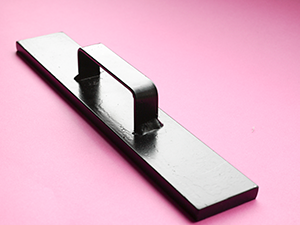
Pattern Weights are used to hold patterns in place while you trace them. They can also be used for holding patterns onto the fabric while you cut instead of pinning. They are especially useful for delicate fabric that would be damaged by pins or difficult knit fabrics. They are also useful for holding fabric on your workbench when you are pinning your pattern onto the fabric.
Pattern Weights come in a variety of shapes and sizes.
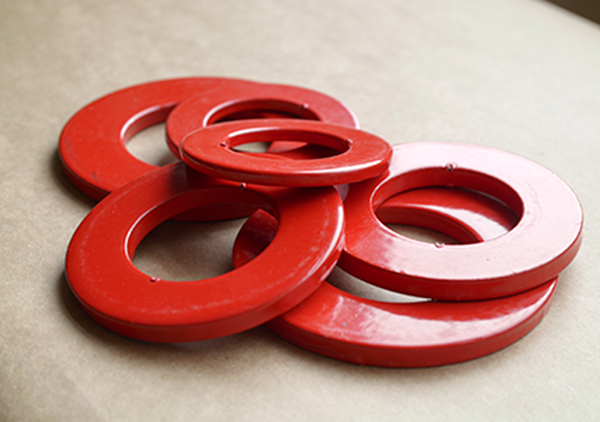
Third Scale Ruler

If you are working with Third Scale Blocks to do patternmaking exercises, it is useful to have a Third Scale Ruler to use with them. For the purposes of learning patternmaking principles, making patterns at a 1/3 scale saves paper and requires less desk space than making them full-scale. If you attend face-to-face classes in patternmaking, you generally make most patterns at one-third scale. Click on this link to go to the Third Scale Blocks Page to download the Third Scale Blocks booklet which contains: Bodice Front and Back, Sleeve, Skirt Front & Back, Pants Front & Back. You will need some cardboard to make the final blocks that you use to do the exercises.
Scotch Tape
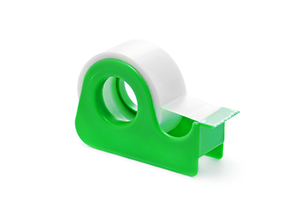
Sellotape is used to stick cardboard or pattern pieces together when you are making alterations to pattern work such as cutting and spreading. You may find removable sellotape works better for you. Note: You need sellotape to construct Blocks purchased on this website. If you download the free third-scale blocks or buy any of the downloadable blocks I sell online, you will need sellotape to construct the blocks. You will have to provide your own cardboard and: (1) stick the block pieces together, then (2) stick the outline of the block shape to a piece of cardboard. You then cut around the shape again, and (after transferring any markings such as notches and drill holes) you can easily separate the paper and cardboard leaving you with a cardboard block with no Sellotape on it. Using Third Scale Blocks allows you to practice patternmaking without using excessive paper and without needing the large desk space required for full-scale work. Go to the Third Scale Block page to download the booklet.
Square Ruler
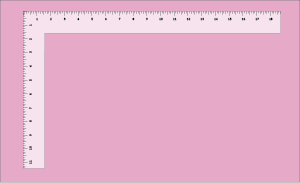
A square ruler, or an L-square ruler, is an essential for patternmaking. When patternmaking you often need to form 90 degree angles when drafting blocks and patterns; having a ruler with two arms that form that 90 degree angle will ensure your right-angles are correct.
Tailor's Chalk
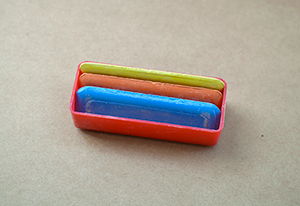
Tailor's Chalk is used on fabric to mark darts and other markings before assembly, and also on the toile to mark alteration fitting and adjustment lines. It can also be used on the actual garment to mark darts and other construction guides. When making toiles for myself, I often use felt-tipped pens to mark these lines for a variety of reasons. Although this may be a no-no for professional patternmakers and sewers, for the home sewer just trying to make their own blocks and toiles, it can make life a lot easier.
Toile Fabric
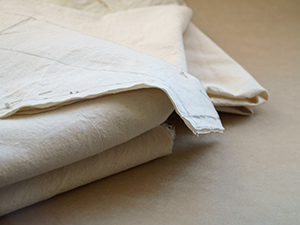
Toile fabric is a cheaper fabric that is used to make a test garment for a pattern. The preferred material to make toiles is calico or muslin. In Australia, calico seems the more commonly used, in America it is muslin. Calico and muslin are used because they are cheap 100% cotton fabrics with an easy to see the weave. You can tear them along both the straight grain and crossgrain to make sure the grainline is correct. Calico and muslin come in a variety of different weights. Although it is used a lot for test fabrics (which is what a "toile" means), it can't be used for all garments - the toile should be made up in a similar fabric (in terms of weight and drape) to the final garment. if the final garment is a very soft delicate fabric, making a toile out of calico will not give a good indication of how the final garment will look and drape. In these cases, other fabrics should be used for the toile. On this website, I give instructions for creating your own blocks and a necessary step in this is to make toiles to fit your blocks. For this purpose, calico and muslin are perfect. As they are plain woven fabrics (no pattern design on it), usually beige in color, and they are good for marking the toile to assist in the creation and fitting.
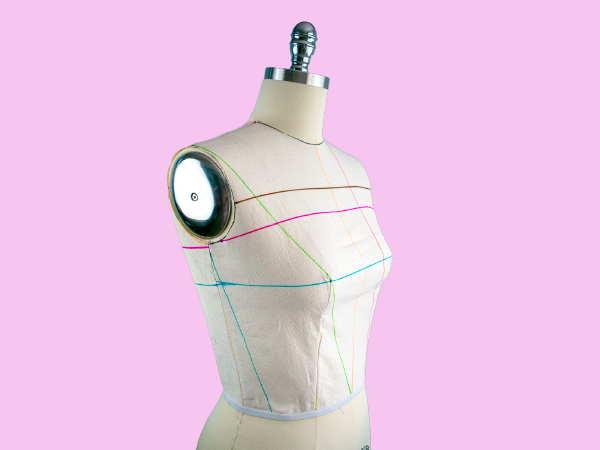
Tracing Wheel
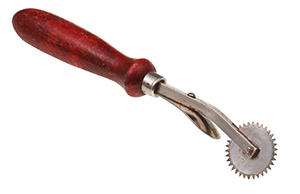
A Tracing Wheel (or Pattern Wheel) is used to transfer markings from a block onto patterns or from patterns onto fabric. When using a Tracing Wheel on cardboard numerous times, it can weaken the cardboard at that spot and make it tear. You may need to remake or copy/retrace your Block on a regular basis if you use the Tracing Wheel a lot.

